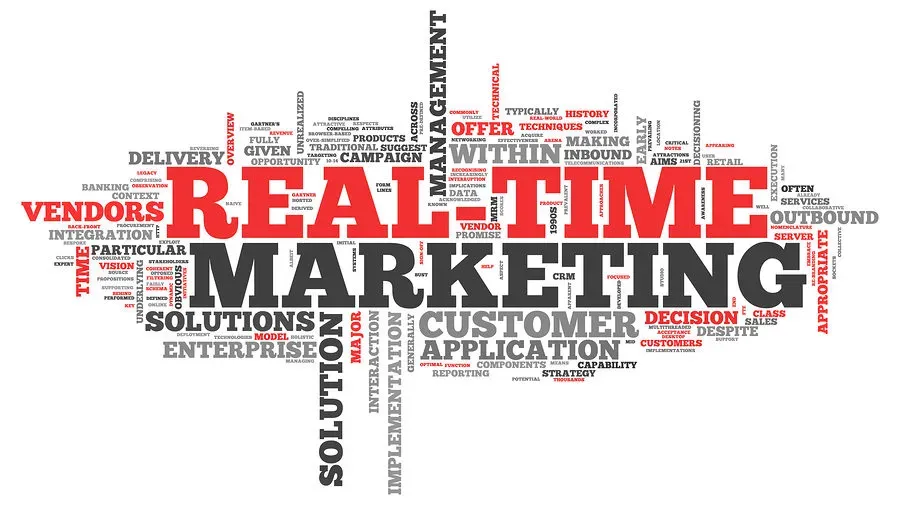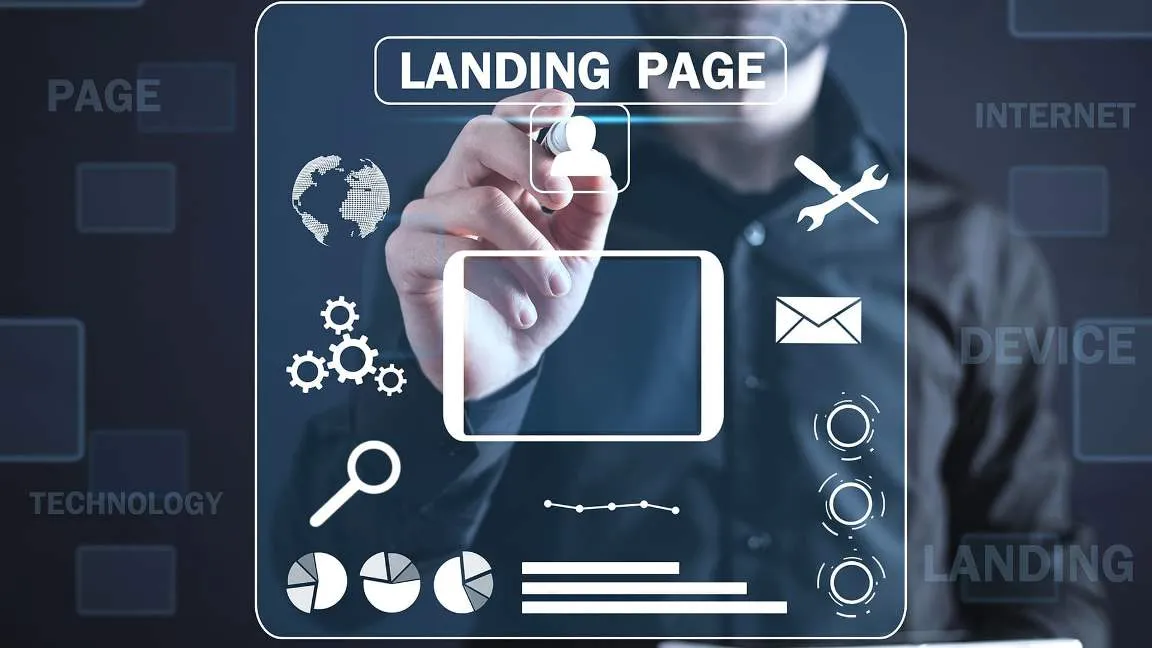Real-time marketing (RTM) is the strategy of interacting with your audience immediately, based on current events, trends, or customer behaviors. Unlike traditional campaigns that are planned months in advance, real-time marketing leverages the “now”—capitalizing on current happenings to craft relevant and timely messages. Think of it like jumping into a conversation as it’s happening rather than waiting until it’s over. This strategy works especially well on fast-paced platforms like Twitter, Instagram, and even TikTok, where trends evolve quickly and user attention is fleeting.
The goal is to meet consumers where they are—emotionally and mentally—at the exact moment they are experiencing something. For example, when the power went out during the 2013 Super Bowl, Oreo famously tweeted, “You can still dunk in the dark.” That tweet went viral, not because it was part of a $5 million ad campaign, but because it was relevant, clever, and timely. That’s the essence of real-time marketing.
RTM is fueled by immediacy, context, and data. Marketers monitor what’s happening in the world and respond quickly with relevant content. Whether it’s a global event, a viral meme, or a customer’s tweet, real-time marketing is about engaging in that moment to capture attention and drive action.
Core Principles of Real-Time Marketing
Real-time marketing thrives on immediacy, relevance, and audience engagement. It demands brands to listen actively, respond quickly, and adapt content based on live events or customer behavior. Authenticity, agility, and timing are essential. The goal is to create meaningful connections through timely, personalized, and impactful content that resonates instantly.
Instant Engagement
The cornerstone of RTM is speed. Being timely is non-negotiable. If you’re jumping on a trend days later, you’ve already missed the train. Consumers expect brands to be as agile and responsive as their friends on social media.
Instant engagement means you’re monitoring live events, trends, and customer behaviors as they happen—and responding just as fast. That could mean replying to a viral tweet, launching a flash sale during a trending hashtag, or creating a meme that riffs on a breaking news story. But speed doesn’t mean sloppiness. You still need to ensure your message aligns with your brand voice and values. Real-time responses must be smart, creative, and most importantly—relevant.
Data-Driven Decisions
Real-time doesn’t mean random. Smart RTM relies heavily on data—social listening tools, website analytics, trending topics, CRM systems, and even geolocation data. This data tells you what your audience is talking about, what they’re engaging with, and what they care about right now.
Imagine you’re running a coffee shop chain. Your analytics show a surge in cold brew searches during an unexpected spring heatwave. A real-time campaign offering a discount on cold brews could drive massive foot traffic and engagement, because you’re reacting to consumer behavior at the moment.
Customer-Centric Approach
Real-time marketing is all about your audience—not your brand. It starts with listening to what your customers are saying and responding in a way that feels natural, authentic, and useful.
This could mean acknowledging a viral meme that your audience is enjoying or offering support during a crisis. It’s about humanizing your brand and showing that you’re not just trying to sell something—you’re part of the conversation.
Types of Real-Time Marketing
Real-time marketing includes event-based responses, trend-jacking, reactive content, and live interactions. Brands might respond to breaking news, join viral challenges, or personalize content based on real-time behavior. Each type helps brands stay culturally relevant, boost visibility, and engage audiences in dynamic, attention-grabbing ways that feel natural and timely.

Event-Based Marketing
Event-based real-time marketing revolves around scheduled or spontaneous events that capture public attention. Think of the Super Bowl, Coachella, the Oscars, or even breaking news stories. Brands prepare in advance for big events but stay flexible enough to react in real time.
A great example is how brands tweet during award shows or major sports finals. They create content live as things happen—like commenting on a celebrity’s outfit or reacting to a touchdown. This helps them stay relevant and visible while everyone’s eyes are on the event.
But it’s not just about entertainment. Companies can also use event-based RTM for product launches, corporate news, or industry conferences. A B2B brand might live-tweet insights during a tech summit or share exclusive behind-the-scenes content from a trade show.
Trend-Jacking
Trend-jacking is the art of riding a viral wave—whether it’s a meme, a dance challenge, or a trending hashtag. It requires quick thinking, a solid understanding of internet culture, and the guts to take creative risks. Let’s say a new TikTok trend is blowing up. If your brand jumps on it with a clever spin, you might go viral. But miss the mark, and you risk looking out-of-touch or even cringe.
The key is to ensure the trend aligns with your brand’s identity and values. Just because something is viral doesn’t mean it’s right for your audience. A Gen Z skincare brand can probably pull off a funny TikTok trend. A serious financial firm? Maybe not so much. When done right, trend-jacking builds relevance, relatability, and reach. It’s one of the fastest ways to inject your brand into current conversations.
Social Media Interactions
Social media is the heartbeat of real-time marketing. It’s where trends emerge, conversations spark, and consumers expect instant responses. Platforms like X (formerly Twitter), Instagram, Facebook, TikTok, and LinkedIn provide the ideal playground for brands to engage in real-time.
When someone tags your brand in a post or sends a DM, they expect a timely response—sometimes within minutes. Social media interactions go beyond scheduled posts or pre-written content calendars. Real-time responses, witty comebacks, and customer support chats happen in the moment, showcasing the brand’s personality and agility.
Imagine a customer tweets about your product while they’re using it—sharing a positive experience or a funny story. A simple like or comment from your brand can turn that moment into a meaningful connection. Better yet, resharing or responding with humor or gratitude can amplify reach and humanize your brand.

Location-Based Campaigns
Location-based real-time marketing uses geolocation data to target users with relevant content, offers, or services depending on where they are physically located. It’s especially effective for brick-and-mortar businesses like restaurants, retail stores, entertainment venues, or service providers.
Say someone walks past a coffee shop and gets a push notification offering a 20% discount on lattes—right there, right then. That’s the power of location-based RTM. You’re reaching the right person at the right place and the right time.
Benefits of Real-Time Marketing
Real-time marketing boosts engagement, builds stronger customer relationships, and increases brand visibility. It creates buzz, drives traffic, and can significantly improve conversion rates. By being present and responsive, brands appear more human, relatable, and trustworthy—qualities that today’s consumers crave in a crowded digital marketing landscape.
Increased Brand Awareness
In the digital world, attention is currency. And real-time marketing is a master at grabbing it. When a brand hops on a viral moment with a clever response, it often gets noticed far beyond its usual audience. That’s how Oreo’s single tweet during the Super Bowl got more attention than million-dollar commercials.
Being part of trending conversations helps you show up where people are already looking. Whether it’s a cultural moment, breaking news, or social movement, adding your voice can put your brand in the spotlight. But it’s not just about chasing virality. It’s about being present, visible, and relevant. Real-time marketing makes your brand feel alive—always listening, always aware.
Better Customer Engagement
Customers love when brands interact with them directly. Whether it’s a personalized reply, a retweet, or even a shoutout, these micro-interactions make people feel seen. That emotional connection builds loyalty. Real-time responses often lead to higher engagement rates than scheduled content. Why? Because it feels fresh, personal, and relevant. You’re responding to the exact moment your customer is living.
From replying to a funny tweet to acknowledging a complaint instantly, real-time engagement creates trust and transparency. People remember how brands made them feel—and RTM gives you countless chances to make those feelings positive.
Competitive Advantage
In a sea of scheduled posts and generic content, real-time marketing makes your brand stand out. It shows you’re not just another brand with a calendar—you’re a living, breathing participant in the world.
Being able to respond quickly and appropriately gives you a major edge over slower-moving competitors. While they’re still waiting for approvals, you’ve already jumped on the trend and captured attention. RTM also helps small or mid-sized businesses punch above their weight. You don’t need a massive budget to win in real-time—you just need creativity, speed, and timing.
Higher Conversion Rates
When marketing meets the moment, it drives action. Whether it’s a limited-time offer during a trending event or a product mention tied to a viral meme, people are more likely to click, buy, or sign up when the timing feels right. Real-time campaigns create a sense of urgency and relevance, both of which are powerful psychological triggers. When users feel the moment is “now or never,” conversions skyrocket. Whether it’s pushing flash sales, promoting live webinars, or replying instantly to product questions, real-time marketing shortens the customer journey by removing delays and increasing motivation.
How to Build a Real-Time Marketing Strategy?
Start with clear objectives, a responsive team, and the right tools. Use social listening, monitor trends, and prepare content templates. Stay flexible to react quickly, maintain brand voice, and analyze performance. Consistency, preparation, and adaptability are key to building an effective real-time marketing strategy that truly connects.

Define Clear Objectives
Before diving headfirst into real-time marketing, you need a game plan. What are you trying to achieve? Brand awareness? Customer engagement? More traffic? Real-time campaigns can do a lot, but only if you’re clear on your goals.
Start by aligning your RTM efforts with your overall business strategy. Are you trying to build buzz around a product launch? Do you want to drive foot traffic to your store? Or maybe you’re looking to build a more relatable brand persona on social media?
Assemble a Responsive Team
Real-time marketing is a team sport. You need writers, designers, strategists, and decision-makers who can work together on the fly. Think of it as a newsroom—everyone has a role, and speed is everything.
The most successful brands have teams ready during key events or even full-time RTM teams that monitor trends 24/7. When something big happens, they can react instantly, without bottlenecks or approval delays. It’s also crucial to empower your team. Give them brand guidelines, but also creative freedom. Micromanaging real-time content kills spontaneity.
Invest in the Right Tools
You can’t do RTM effectively without the right toolkit. Here’s what you’ll need:
- Social Listening Tools (e.g.,Talkwalker)
- Real-Time Analytics (e.g., Google Analytics)
- Automation Platforms (e.g., HubSpot)
- Content Creation Tools (e.g., Canva)
Monitor and Adapt in Real-Time
RTM isn’t “set it and forget it.” You need to monitor your content’s performance and the ongoing conversation. Did your tweet land well? Is there backlash? Are people engaging or ignoring it?
Adapt as you go. Sometimes, a post goes unexpectedly viral—have a follow-up ready. Other times, your joke might not hit—delete or clarify before it escalates.
Common Challenges and How to Overcome Them
Timing, relevance, and staying on-brand are major hurdles. Brands may post too late, misread trends, or face backlash. To overcome this, use social monitoring tools, establish voice guidelines, empower trained teams, and plan for crisis management. Balance speed with strategy to avoid missteps and ensure success.
Timing and Relevance
The biggest challenge? Being fast and smart. Many brands either react too slowly or jump into trends that have nothing to do with them. RTM is all about balance.
You need to act quickly, but not carelessly. If the moment passes, let it go. Posting after a trend dies is worse than not posting at all—it makes you look out of touch. Use social listening tools and create pre-approved content templates to speed up response time without sacrificing quality.
Brand Voice Consistency
Real-time marketing can sometimes veer off-brand. A joke might be funny, but if it doesn’t sound like you, it confuses your audience.
Establish a clear brand voice guide. If you’re casual and witty, stay that way—even in crisis moments. If you’re professional and serious, don’t try to be the class clown online. Consistency builds trust. Also, ensure that whoever is posting has access to your voice rules. The tone should match across all channels, even when the content is spontaneous.
Managing Backlash and Negative Reactions
The internet is a double-edged sword. One wrong move and you could face a wave of backlash. A poorly timed joke, an offensive reference, or a misunderstood post can go south fast.
Have a crisis communication plan in place. Designate a response team, prepare public statements, and decide how you’ll respond—or not respond—to negative feedback.
Conclusion
Real-time marketing isn’t just a buzzword—it’s a shift in how brands communicate, connect, and convert. In a world where things move at lightning speed, being present and reactive isn’t optional—it’s essential. When done right, RTM builds relationships, strengthens loyalty, and boosts visibility. Whether it’s a clever tweet during a power outage or a personalized email triggered by real-time behavior, the power of now is immense. But remember—real-time doesn’t mean reckless. The most effective RTM is strategic, on-brand, and deeply attuned to both cultural moments and individual customer behaviors.








